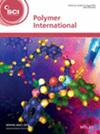求助PDF
{"title":"Thermally stable, low-combustion and high-strength natural oil-blended epoxy resin","authors":"Umang Dubey, Kavan Panneerselvam","doi":"10.1002/pi.6746","DOIUrl":null,"url":null,"abstract":"<p>When contemplating the manufacturing of subsequent iterations of polymer composites, companies may choose to maximize the exploitation of naturally existing resources for synthesis. The rationale for this decision becomes apparent when considering both environmental and economic factors. Inside the cashew nutshell's honeycomb structure is a viscous, dark-brown liquid called cashew nutshell oil (CNSL). This CNSL is among the few economically viable sources of naturally occurring phenols. Considering that CNSL is easily obtainable, cost-efficient and derived from agricultural waste, this contribution showcases its financially and environmentally viable characteristics. This study made a natural oil-blended epoxy resin using CNSL at 15, 20, 25 and 30 vol.% in synthetic epoxy. Thermal and mechanical properties, morphology analysis, water absorption, flammability and limiting oxygen index (LOI) were used for characterization. In addition, the examination of the link between the structure and properties was conducted using X-ray diffraction analysis. With 20 vol.% CNSL, the epoxy had 12.66%, 18.34%, 10.18%, 13.72% and 3.78% higher flexural strength, compression strength, tensile strength, impact energy and Shore-D hardness, respectively. The water absorption test indicated a mass decrease similar to that of pure epoxy. With 24.71% residual mass at 550 °C compared to 2.66% for pure epoxy, the bio-blended epoxy showed thermal stability. The cured bio-blended epoxy lowered the combustion rate by 9.62% compared to the cured epoxy resin, while no UL94 rating was detected. The LOI range indicates that the cured bio-blended epoxy belongs to the category of materials that burn slowly. © 2025 Society of Chemical Industry.</p>","PeriodicalId":20404,"journal":{"name":"Polymer International","volume":"74 5","pages":"444-451"},"PeriodicalIF":3.6000,"publicationDate":"2025-01-20","publicationTypes":"Journal Article","fieldsOfStudy":null,"isOpenAccess":false,"openAccessPdf":"","citationCount":"0","resultStr":null,"platform":"Semanticscholar","paperid":null,"PeriodicalName":"Polymer International","FirstCategoryId":"92","ListUrlMain":"https://scijournals.onlinelibrary.wiley.com/doi/10.1002/pi.6746","RegionNum":4,"RegionCategory":"化学","ArticlePicture":[],"TitleCN":null,"AbstractTextCN":null,"PMCID":null,"EPubDate":"","PubModel":"","JCR":"Q2","JCRName":"POLYMER SCIENCE","Score":null,"Total":0}
引用次数: 0
引用
批量引用
Abstract
When contemplating the manufacturing of subsequent iterations of polymer composites, companies may choose to maximize the exploitation of naturally existing resources for synthesis. The rationale for this decision becomes apparent when considering both environmental and economic factors. Inside the cashew nutshell's honeycomb structure is a viscous, dark-brown liquid called cashew nutshell oil (CNSL). This CNSL is among the few economically viable sources of naturally occurring phenols. Considering that CNSL is easily obtainable, cost-efficient and derived from agricultural waste, this contribution showcases its financially and environmentally viable characteristics. This study made a natural oil-blended epoxy resin using CNSL at 15, 20, 25 and 30 vol.% in synthetic epoxy. Thermal and mechanical properties, morphology analysis, water absorption, flammability and limiting oxygen index (LOI) were used for characterization. In addition, the examination of the link between the structure and properties was conducted using X-ray diffraction analysis. With 20 vol.% CNSL, the epoxy had 12.66%, 18.34%, 10.18%, 13.72% and 3.78% higher flexural strength, compression strength, tensile strength, impact energy and Shore-D hardness, respectively. The water absorption test indicated a mass decrease similar to that of pure epoxy. With 24.71% residual mass at 550 °C compared to 2.66% for pure epoxy, the bio-blended epoxy showed thermal stability. The cured bio-blended epoxy lowered the combustion rate by 9.62% compared to the cured epoxy resin, while no UL94 rating was detected. The LOI range indicates that the cured bio-blended epoxy belongs to the category of materials that burn slowly. © 2025 Society of Chemical Industry.




 求助内容:
求助内容: 应助结果提醒方式:
应助结果提醒方式:


